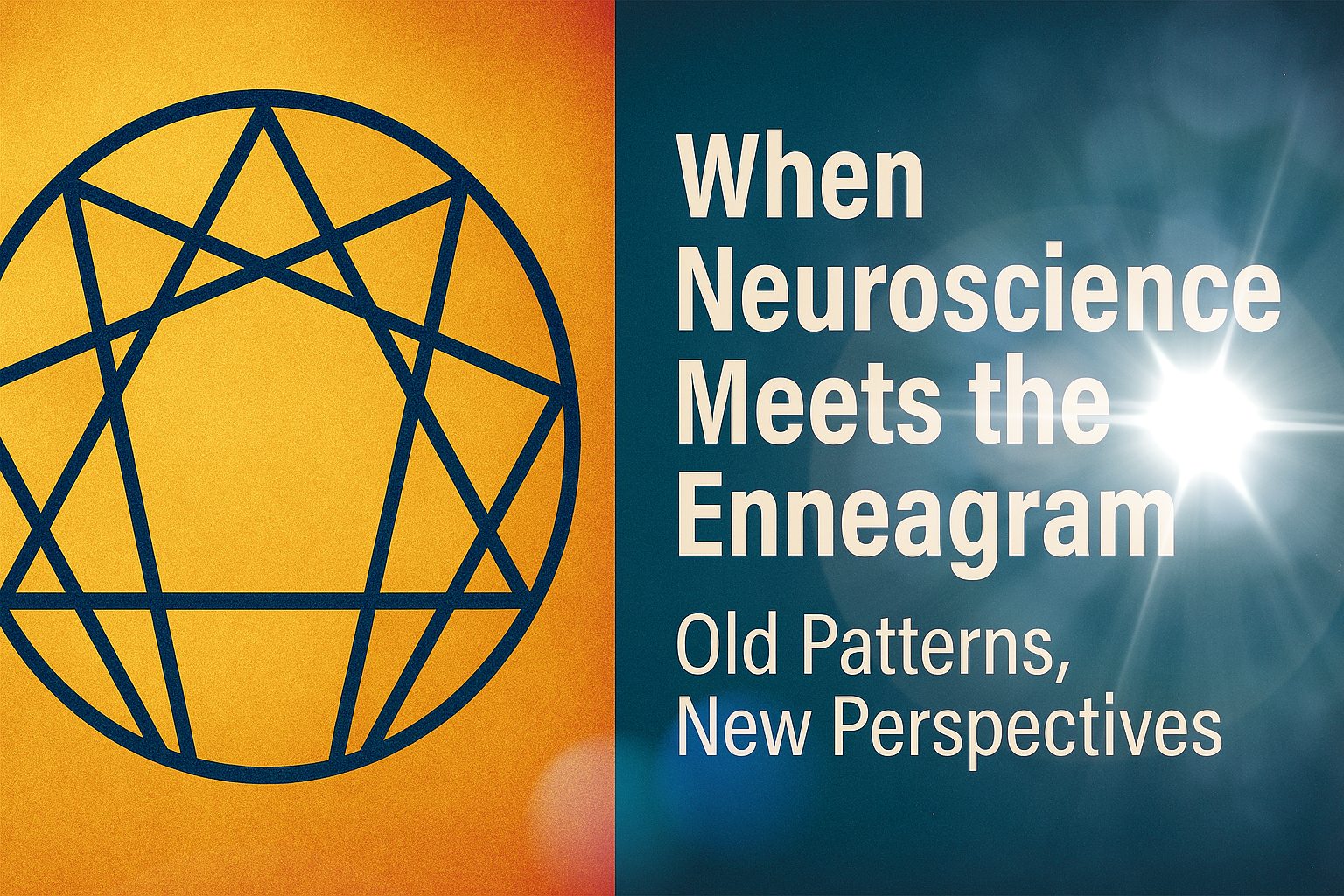New methods in neuroscience are uncovering what the Enneagram has been pointing to all along.
I was reading this article in Neuroscience News about the Big Five personality traits being re-examined through a new data-driven method, and it got me wondering about the connection to the Enneagram.
The Big Five (also called the Five-Factor Model of personality) are five broad dimensions that psychologists use to describe human personality. They are:
- Openness to Experience – imagination, curiosity, appreciation for art, ideas, and novelty (vs. conventional, routine-oriented).
- Conscientiousness – organization, responsibility, dependability, self-discipline (vs. impulsive, careless, disorganized).
- Extraversion – sociability, assertiveness, talkativeness, high energy (vs. reserved, quiet, withdrawn).
- Agreeableness – kindness, empathy, cooperation, trust (vs. competitive, critical, antagonistic).
- Neuroticism – tendency toward negative emotions like anxiety, sadness, irritability (vs. calm, emotionally stable, resilient).
For decades, psychology has relied on the Big Five—openness, conscientiousness, extraversion, agreeableness, and neuroticism—as the dominant framework for organizing human personality. It’s tidy, research-based, and remarkably stable across cultures. Yet, this new research, using a technique called Taxonomic Graph Analysis, found that when the data speaks for itself, new traits emerge—traits such as sociability, integrity, and impulsivity. These didn’t fit neatly into the Big Five model. They point to dimensions of human nature we’ve overlooked, or perhaps forced into categories too broad to capture their flavor.
In the Vanderbilt study that challenged the Big Five with a bottom-up data analysis, six distinct traits emerged, rather than the traditional five. The six were:
- Sociability – warmth, friendliness, tendency to engage and connect with others.
- Integrity – honesty, fairness, reliability, a sense of moral consistency.
- Impulsivity – acting quickly without forethought, spontaneity, and difficulty delaying gratification.
- Anxiety/Neuroticism – sensitivity to stress, worry, and emotional instability.
- Conscientiousness – responsibility, order, discipline, follow-through.
- Openness/Creativity – curiosity, imagination, interest in new ideas and experiences.
That immediately brought me to the Enneagram. While the Big Five is descriptive, cataloging how people tend to behave, the Enneagram has always been more dynamic—explaining why we behave the way we do. It delves beneath the surface to examine motivation, defense, and longing. Traits like impulsivity or integrity don’t surprise anyone familiar with the Enneagram, as they are evident in the types. Impulsivity echoes in the Type Seven’s hunger for experience and the Type Eight’s intensity. Integrity is the pulse behind Type One’s fixation on rightness, and sociability infuses Type Two’s relational orientation.
The interesting overlap is that modern data science, by stripping away old categories, seems to be rediscovering what the Enneagram has been pointing to all along—that personality isn’t neatly organized into broad, static buckets. It’s an interweaving of tendencies, qualities, and distortions of something deeper. What psychology is starting to see as “new traits” may be the shadows of essential qualities the Enneagram describes: integrity as the lost wholeness of Being, sociability as the longing for connection, impulsivity as the distortion of freedom.
So perhaps the bridge is this: both the neuroscientific approach and the Enneagram are saying, “Don’t stop with the categories.” Categories are helpful, but they’re never the full picture. The psyche keeps slipping out of our boxes. The Enneagram invites us to follow those slippages back toward essence, while the new personality science is starting to catch glimpses of traits that reveal something more nuanced than the Big Five ever allowed.
It leaves me with a question: Are these new traits that psychology is surfacing just more precise descriptions of behavior, or are they hints of something essential in us that gets bent into our personality? And if so, might the Enneagram’s deeper lens—one that sees personality as a distortion of essence—help modern psychology interpret what the data is beginning to whisper?
I’d love to hear your reflections: where do you see these overlaps between the Enneagram and emerging personality research in your experience?
John Harper is a Diamond Approach® teacher, Enneagram guide, and a student of human development whose work bridges psychology, spirituality, and deep experiential inquiry. He is the author of The Enneagram World of the Child: Nurturing Resilience and Self-Compassion in Early Life and Good Vibrations: Primordial Sounds of Existence, available on Amazon.

